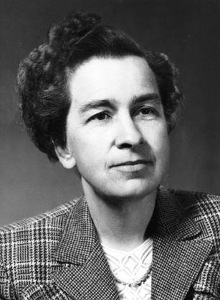
Berylliosis, or chronic beryllium disease (CBD), is a chronic allergic-type lung response and chronic lung disease caused by exposure to beryllium and its compounds, a form of beryllium poisoning. It is distinct from acute beryllium poisoning, which became rare following occupational exposure limits established around 1950. Berylliosis is an occupational lung disease.
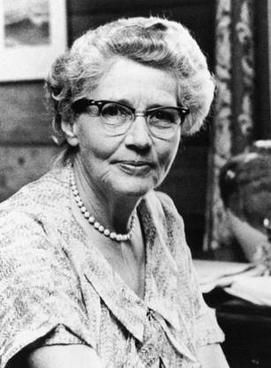
Helen Brooke Taussig was an American cardiologist, working in Baltimore and Boston, who founded the field of pediatric cardiology. She is credited with developing the concept for a procedure that would extend the lives of children born with Tetralogy of Fallot. This concept was applied in practice as a procedure known as the Blalock-Thomas-Taussig shunt. The procedure was developed by Alfred Blalock and Vivien Thomas, who were Taussig's colleagues at the Johns Hopkins Hospital.
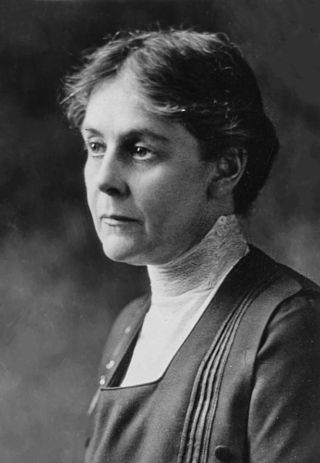
Alice Hamilton was an American physician, research scientist, and author. She was a leading expert in the field of occupational health and a pioneer in the field of industrial toxicology.
Occupational lung diseases are work-related, lung conditions that have been caused or made worse by the materials a person is exposed to within the workplace. It includes a broad group of diseases, including occupational asthma, industrial bronchitis, chronic obstructive pulmonary disease (COPD), bronchiolitis obliterans, inhalation injury, interstitial lung diseases, infections, lung cancer and mesothelioma. These diseases can be caused directly or due to immunological response to an exposure to a variety of dusts, chemicals, proteins or organisms.

Carola Blitzman Eisenberg was an Argentine-American psychiatrist who became the first woman to hold the position of Dean of Students at Massachusetts Institute of Technology. From 1978 to 1990, she was the Dean of Student Affairs at Harvard Medical School (HMS). She has for a long time been Lecturer in the newly renamed Department of Global Health and Social Medicine at HMS. She was also both a Founding Member of Physicians for Human Rights and an Honorary Psychiatrist with the Massachusetts General Hospital in Boston, a longstanding position there.

Frederick Houdlette Albee was a surgeon who invented bone grafting and other advances in orthopedic surgery as a surgical treatment. He was also one of the fathers of rehabilitative medicine, a pioneer in physical, psychological and occupational rehabilitation. As a result of his discoveries, untold numbers of injured, crippled and disfigured persons were able to overcome trauma that had previously been untreatable.

Myrtelle May Moore Canavan was an American physician and medical researcher. She was one of the first female pathologists and is best known for publishing a description of Canavan disease in 1931.

JoAnn Elisabeth Manson is an American physician and professor known for her pioneering research, public leadership, and advocacy in the fields of epidemiology and women's health.

Anne Buckingham Young is an American physician and neuroscientist who has made major contributions to the study of neurodegenerative diseases, with a focus on movement disorders like Huntington's disease and Parkinson's disease. Young completed her undergraduate studies at Vassar College and earned a dual MD/PhD from Johns Hopkins Medical School. She has held faculty positions at University of Michigan and Harvard University. She became the first female chief of service at Massachusetts General Hospital when she was appointed Chief of Neurology in 1991. She retired from this role and from clinical service in 2012. She is a member of many academic societies and has won numerous awards. Young is also the only person to have been president of both the international Society for Neuroscience and the American Neurological Association.
Acute beryllium poisoning is acute chemical pneumonitis resulting from the toxic effect of beryllium in its elemental form or in various chemical compounds, and is distinct from berylliosis. After occupational safety procedures were put into place following the realization that the metal caused berylliosis around 1950, acute beryllium poisoning became extremely rare.
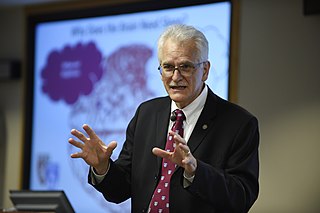
Charles A. Czeisler is an American physician and sleep researcher. He is a researcher and author in the fields of both circadian rhythms and sleep medicine.
Margaret Rigsby Becklake, was a Canadian academic and epidemiologist. Margaret focused her career on the study of environmental and occupational determinants of childhood and adult airway disease, specifically the lung health of asbestos miners and millers.
Laurie Hollis Glimcher is an American physician-scientist who was appointed president and CEO of Dana–Farber Cancer Institute in October 2016. She was elected a Member of the American Philosophical Society in 2019.
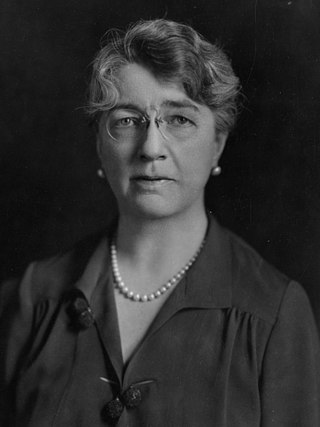
Louise Pearce was an American pathologist at the Rockefeller Institute who helped develop a treatment for African sleeping sickness (trypanosomiasis). Sleeping sickness was a fatal epidemic which had devastated areas of Africa, killing two-thirds of the population of the Uganda protectorate between 1900 and 1906 alone. With chemists Walter Abraham Jacobs and Michael Heidelberger and pathologist Wade Hampton Brown, Pearce worked to develop and test arsenic-based drugs for its treatment. In 1920, Louise Pearce traveled to the Belgian Congo where she designed and carried out a drug testing protocol for human trials to establish tryparsamide's safety, effectiveness, and optimum dosage. Tryparsamide proved successful in combating the fatal epidemic, curing 80% of cases.
Sibte Hasan Zaidi was an Indian pathologist and toxicologist. After his training in pathology at the Hammersmith Hospital in London, United Kingdom, he returned to India to continue experimental toxicology research initially at the Central Drug Research Institute, and then as Founding Director at Industrial Toxicology Research Center (ITRC) in Lucknow (1965-1978). During his later years, he served on national and international committees to increase awareness and set policy to prevent the harmful effects of industrial toxins in people.

Janet L. Mitchell was an American physician known for her advances in perinatal HIV/AIDS treatment. During the early days of the AIDS epidemic in the U.S. Mitchell developed protocols for health treatment of pregnant women who were HIV positive or at risk for developing AIDS. She advocated against mandatory testing and testifying before Congress, she advocated in favor of an inclusive approach to health care and social services. One of her innovations derived from a study that saw a 70% decrease in HIV transmission to babies when AZT was administered to their mothers during the pregnancy.
David C. Christiani is an American physician, specializing in the molecular epidemiology of cancer. He is currently the Elkan Blout Professor of Environmental Health at Harvard T.H. Chan School of Public Health, where he is also the Director of the Harvard Education and Research Center for Occupational Safety and Health. His specialty is Molecular Epidemiology of cancer.
Valerie Ellen Stone is an American physician who is a professor of medicine at the Harvard Medical School. She serves as Vice Chair for Diversity, Equity, and Inclusion, Department of Medicine, Brigham and Women's Hospital. She specializes in the management of HIV/AIDS, health disparities and improving the quality of medical education.

Rochelle Paula Walensky is an American physician-scientist who is the director of the Centers for Disease Control and Prevention and the administrator of the Agency for Toxic Substances and Disease Registry. Prior to her appointment at the CDC, she was the Chief of the Division of Infectious Diseases at Massachusetts General Hospital and a professor of medicine at Harvard Medical School. Walensky is an expert on HIV/AIDS.
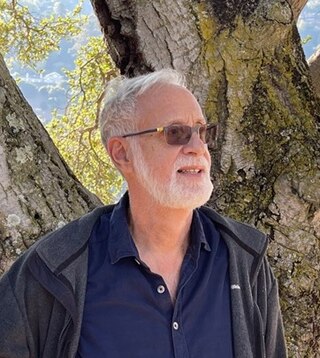
Mark Richard Cullen is a physician, scholar, and population health scientist known for his work in occupational medicine. As a professor at Yale and later Stanford University, his research focused on the social, environmental, behavioral and bio-medical determinants of morbidity and mortality in adults, with special emphasis on the role of workplace’in such matters.
